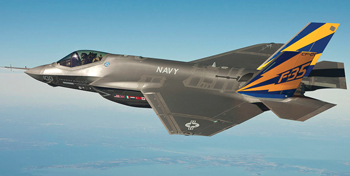Middle East conflicts trigger new U.S.-Russia arms race
By Thalif Deen | Last updated: May 7, 2015 - 8:13:08 PMWhat's your opinion on this article?

|
The primary beneficiaries are the United States and Russia, two of the world’s largest arms suppliers, who are feeding the multiple warring parties in Syria, Iraq, Libya, and most recently in Yemen.
Dr. Natalie J. Goldring, a senior fellow with the Security Studies Program in the Edmund A. Walsh School of Foreign Service at Georgetown University, told IPS “once again, the Middle East seems to be mired in an arms race.”
The New York Times, she pointed out, recently published a provocative article titled, “Sale of U.S. Arms Fuels the Wars of Arab States,” mentioning several potential U.S. arms sales to the region in the near future.
“But this isn’t likely to be the whole story,” she added.
In all likelihood, said Dr. Goldring, if the proposed U.S. sales go forward, the Russian government will use them as an excuse to supply its clients with more weapons.
“It’s an easy cycle to predict—the United States makes major sales to clients such as Saudi Arabia, Qatar, or the United Arab Emirates. Then Russia sells weapons to Iran and perhaps Syria with the argument they’re simply balancing U.S. sales. And the cycle continues,” she added.
The six-member Arab coalition engaged in bombarding Yemen is led by Saudi Arabia and includes the United Arab Emirates (UAE), Bahrain, Qatar, Jordan and Egypt—all of them equipped primarily with U.S. weapons systems.
The jets used in the attacks inside Yemen are mostly F-15s and F-16s—both front line fighter planes in Middle East arsenals.
The London Economist says “oblivious to the unfolding humanitarian crisis,” Prince Al-Waleed bin Talal, described as a billionaire member of the Saudi royal family, is offering 100 super luxury Bentley cars (one each) to the fighter pilots participating in the bombing raids inside Yemen.
Russia announced it was lifting a five-year voluntary embargo on a long-pending sale of S-300 anti-aircraft missiles to Iran, which is accused of arming the Houthi rebels under attack by Saudi Arabia and its allies.
The Saudi coalition, which temporarily halted the aerial attacks, resumed its bombings in late April.
As the Wall Street Journal reported April 27, the air campaign has transformed Yemen into a battlefield for broader contest over regional power between Shiite Iran and Sunni Muslim countries led by Saudi Arabia.
There were also reports the Russian government has offered to sell advanced surface-to-air missiles to Iran, providing Tehran with a mobile system that could attack both missiles and aircraft.
The system, the Antey-2500, apparently has the capacity to defend against—and attack—ballistic missiles, cruise missiles, and fixed-wing aircraft.
Meanwhile, Russia has also continued to be the primary arms supplier to Syria, another military hot spot in the Middle East.
Historically, virtually all of the weapons systems in the Syrian arsenal have come from Russia, which decades ago signed a Treaty of Friendship and Cooperation with Damascus ensuring uninterrupted supplies of arms from Moscow.
The civil war in Syria, which has cost over 220,000 lives, is now in its fifth year, with no signs of a settlement.
The Stockholm International Peace Research Institute recently released data that showed the United States was still the world’s leading arms exporter.
In the most recent period its data covered, 2010-2014, the United States accounted for 31 percent of the world’s transfers of major conventional weapons. Russia was in second place with 27 percent. No other country accounted for more than 5 percent of arms sales during this period.
According to the New York Times, U.S. defense industry officials told Congress they were expecting within days a request from Arab countries “to buy thousands of American-made missiles, bombs and other weapons, replenishing an arsenal that has been depleted over the past year.”
And Qatar is planning to replace its French-made Mirage fighters with U-S.-made F-15 jets.
Dr. Goldring told IPS one particularly troubling aspect of recent press accounts is the consideration of potential sales of the U.S.’s new F-35 stealth fighter, one of the most advanced, to countries in the Middle East.
“We’ve seen this tactic before. First, U.S. policymakers want to sell our most sophisticated fighter aircraft. Then they turn around and say we need to develop new fighters because the current technology has been distributed to so many countries.
“If we want to preserve our military forces’ technological advantages over potential adversaries, we need to show more restraint in our weapons transfers,” she added.
“For years, I’ve written and spoken about the ‘fallacy of the last move’ in U.S. foreign policy. We keep repeating the same mistake, which is to assume that our foreign policy decisions will not be answered by our adversaries. Time and time again, we’ve been proven wrong in this regard. It’s likely to happen again in this case.”
INSIDE STORIES AND REVIEWS
-
-
About Harriett ... and the Negro Hollywood Road Show
By Rabiah Muhammad, Guest Columnist » Full Story -
Skepticism greets Jay-Z, NFL talk of inspiring change
By Bryan 18X Crawford and Richard B. Muhammad The Final Call Newspaper @TheFinalCall » Full Story -
The painful problem of Black girls and suicide
By Charlene Muhammad -National Correspondent- » Full Story -
Exploitation of Innocence - Report: Perceptions, policies hurting Black girls
By Charlene Muhammad -National Correspondent- » Full Story -
Big Ballin: Big ideas fuel a father’s Big Baller Brand and brash business sense
By Bryan Crawford -Contributing Writer- » Full Story






 Click Here Stay Connected!
Click Here Stay Connected!








